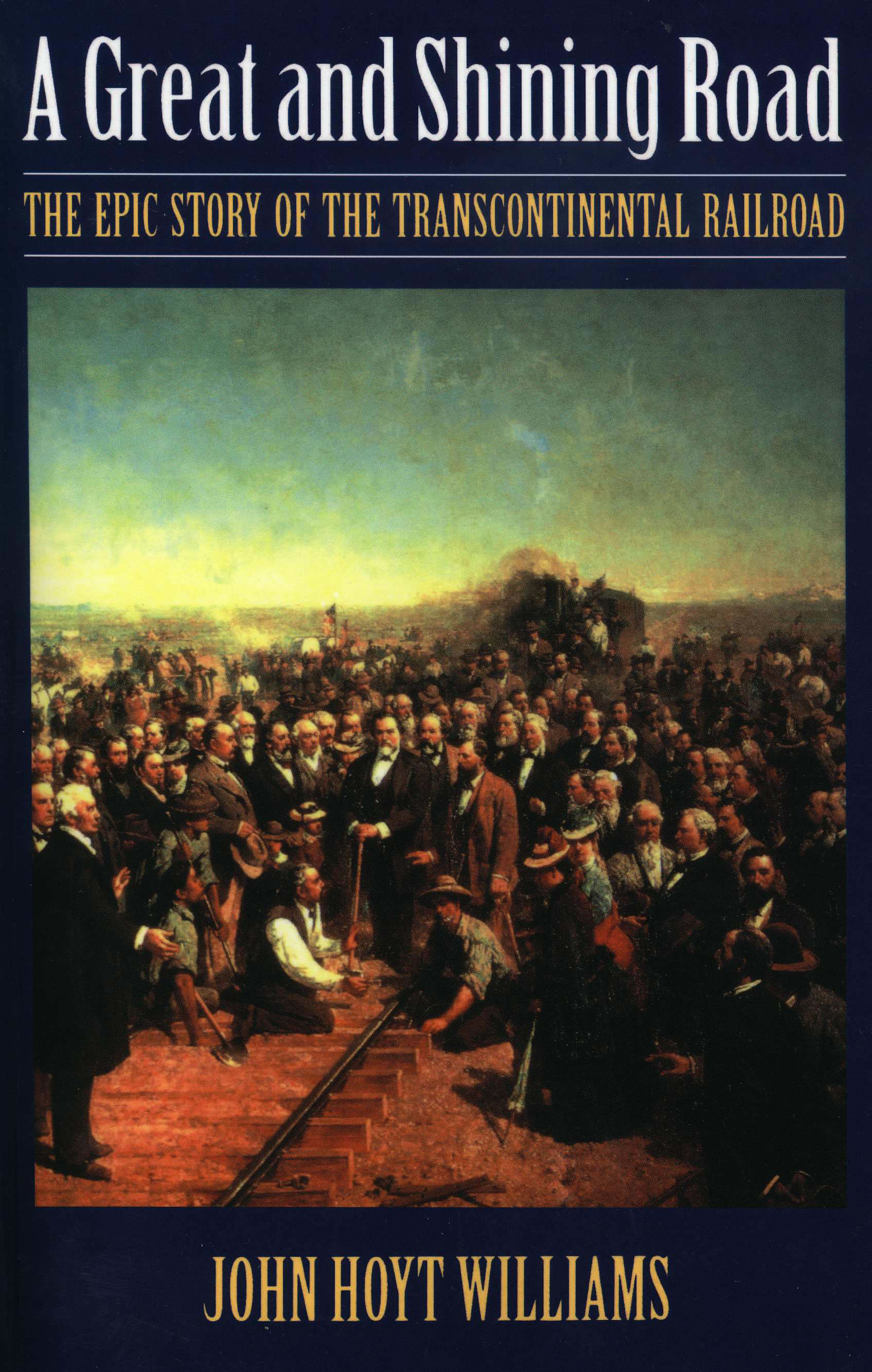
 A Great and Shining Road John Hoyt Williams 1988 .
A Great and Shining Road John Hoyt Williams 1988 .
The difference between this book and High Road to Promontory is that High Road to Promontory is about the Central Pacific and building the road east from Sacramento. A Great and Shining Road is about both the Central and Union Pacific railroads.
Although the book is about the same number of pages there is at the same time a lot more and a lot less in it. Obviously there is a lot more because the book is about both roads. There is also a lot more because there is a lot more detail in the Great and Shining Road. If you are a rail buff and want to know every detail of the building this is the book for you. You will learn more stories and their details such as Theodore Judah’s attempt to buy out the Big 4 and where the Sierra starts and how that came to be. You will learn more about the opposition to the railroad, opposition to Chinese workers. You will learn a lot about business details, stock grants, bribery, the details in congressional bills as well as the actual congressional vote totals, that the formula for nitroglycerine is C6H5H18N. You will learn about Union Pacific railroad ties and how to burnettize them.
What is less in the Great and Shining Road are pictures and quotes. There are some but nowhere near what are in High Road. Substituting details for pictures and quotes makes Shining Road more cerebral, maybe, but also a bit tedious.
Still the extra detail do give a richer picture. For example the book starts with an interesting introduction to the emptiness of the land prior to the railroad. The land was not ready for the railroad because there was no market. Railroad technology had to improve before there could be a transcontinental railroad too. But improve it did and there was tremendous growth of railroads in America. Between 1850 and 60 more miles of railroad track had been lid in the U.S. than anywhere in the world and by 1860 just under half of all the tracks in the world were in the U.S. That’s impressive and adds to the story.
The details don’t always add though. When the Central Pacific laid an unheard of 10 miles of track in one day and won Charles Crocker $10,000 (had the bet been paid) the workers laid 2580 ties, 3520 rails, 28,960 spikes, 14,080 bolts, 2,112,000 lbs or iron, and each man lifted a total of 264,000 pounds of iron each. At the ceremonies in Promontory Point, Utah we learn how much the ceremonial spikes cost, the value of gold in those days, the cost of the velvet inlaid presentation box for the gold spike, and even who made it. Train buffs would love that. Other readers maybe not so much.